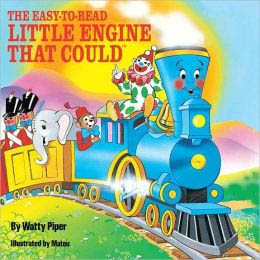The little engine that can
I was thinking about work time and leisure time, about success and what it all means when – out of the blue – I was struck by an ear worm from the 80s. Dolly Parton has been prancing around in my head ever since – so it’s been getting pretty crowded in here – and this is what’s leaked out.
I’m pretty sure that on most days a goodly number of us do tumble out of bed and stumble to the kitchen, pouring ourselves a cup of ambition on the way to the start of some version of a 9-to-5. So where do our dreams and unrealised ambitions fit into this picture and how can we shift from Dolly’s (admittedly tuneful) daily grind towards achieving any or all of them? In essence, how does one become successful? Indeed, what is success?
At various times I’ve attended mindfulness workshops, entrepreneurial workshops, professional development sessions and ontological coaching seminars that have targeted variations of those question. Whilst each event was interesting in its own way, the most interesting thing is that two clear threads seems to run through all of them. Firstly, since it’s based on personal aspirations and ideals, success looks different to every individual. Secondly, the chances of recognising and achieving success are significantly increased if we set ourselves goals.
How does this whole goal setting thing work? No doubt there are as many different answers to this question as there are people to ask it, but not everyone has the time or opportunity to follow the bouncing ball through workshops, seminars, ice-breaker sessions and supplementary reading… so here’s my take on it.
I found that a pretty good starting point is to take about 10 minutes of quiet time. Find yourself a comfy spot and just sit there – on your own – for a while. No, I’m not urging you to meditate, burn incense or sit cross-legged – although feel free to do so if it’s your thing. What I’m suggesting is that you just sit quietly, take a deep breath and think for a bit. Think about what it is that you want to achieve – the big things and the small things. Don’t avoid them just because they seem unachievable, just let them all drift through your mind one by one as you sit there.
I found this part quite hard to work through and had to have a couple of goes at it before I stopped floundering, but I gradually got there. This made the next step, which is to write them all down, a whole bunch easier. Since no-one gets to see your list except you (unless you choose otherwise), it’s important not to self-edit at this point. Just write all those ideas down, then look at the list you’ve created and select four or five major objectives (goals) and a similar number of smaller ones to focus on.
Don’t panic – there’s more. Here’s where I tell you that literature on this subject suggests that it’s a good idea to set SMART goals. This is workshop-speak for goals that are specific, measurable, attainable, realistic and time-bound. I wasn’t clear on what that meant at first, given that the literature also advocates dreaming big and not ruling out things just because they seem unachievable. The two ideas seemed mutually exclusive.
It turns out that there’s a trick to all of this: first you set some goals (write them down), then you define how the goal can/will be measured (the exact $, the size of car, the variety of holiday, the number of children, whatever). Moving on, you look at the goals you’ve written down to establish whether they’re attainable – then you take the BIG goals and redefine them if they look unmanageable. Essentially, you CHUNK the big goals into smaller, achievable steps to move you along the pathway towards where you want to be. It’s that old trick of starting a journey with a single step. The last two points are to ensure that the goals you’ve set are relevant to you (not someone else) and to set a timeframe for achieving each goal (3 months, 1 year, 5 years).
Voilà! SMART goals.
What I did next was to create a vision board of my key goals. I spent a bit of time hunting around online for images that could represent my various goals visually, to give them some specific shape and clarity. I put them all together on one page, printed it out and stuck it up in my study. Why? Well, what both the chunking of the goals and then the visualisation does is to help me to stay focused on them. It provides that little nudge I sometimes need on down days and an affirmation on up days. Either way, I end up feeling like The Little Engine Who Could – chugging away “I think I can, I think I can” as I gradually move forward.
Success is always a work in progress as some goals are achieved, some are reviewed and others are replaced by more relevant goals. What’s pretty clear to me is that the top only remains out of sight if you don’t start heading towards it. I can honestly say that my forward momentum started with me actually articulating my goals, looking at them and making some decisions about what’s important to me. Perhaps this will work for you. If you do decide to give it a go, please be kind to yourself on the journey. Dust yourself off and start again if things don’t quite work out sometimes – and celebrate your successes – no matter how small – when they do.
